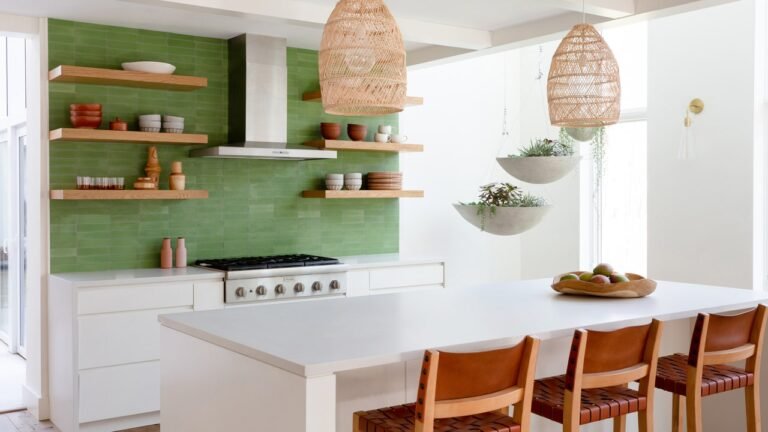The World’s Best Firms Are Finding New Ways To Conquer Under-Utilized Urban Areas for Public Green Space
header?How can architecture be a force for good in our ever-changing world? During Future Fest, we’ll pose this question to some of the world’s best architects. Launching in September, our three-week-long virtual event will be 100% free to attend. Register here!
If the 20th century was the age of rapid urban sprawl, in the 21st century, the quality of the urban environment and urban life has finally become a protagonist in design. It is a well-known fact that access to quality urban green spaces can significantly improve urban life. From the perspective of mental health, exposure to the natural environment helps with anxiety problems and stresses, especially if you live in a city with a dense population. But the land is scarce in cities; therefore, people inevitably have to share green spaces — sometimes, this is the best part. This scarcity also means that architects are having to be more and more creative in terms of the ways that they imagine making space for green areas, sometimes resulting in inspirational changes to the fabric of the concrete jungle that can be considered feats of engineering.
Public green spaces are natural sites for gathering that possess a community quality. Making public green spaces accessible and welcoming for all in the community they serve is a critical aspect of urban design. The following five A+Awards wining projects are city green areas tailored for their community and climate. Some are built from scratch while others renovate and revitalize old city spaces. These inspiring precedents might not be immediately generalizable to other sites, but they present the versatility and possibility of urban green space design.
Interested in learning more about the future of landscape architecture and urban design? Isabel Castilla, principal at James Corner Field Operations (see the first park on this list!), will speak at Architizer Future Fest this September:
West End Square
By James Corner Field Operations, Dallas, TX, United States
Popular Choice, 10th Annual A+Awards, Public Parks & Green Spaces
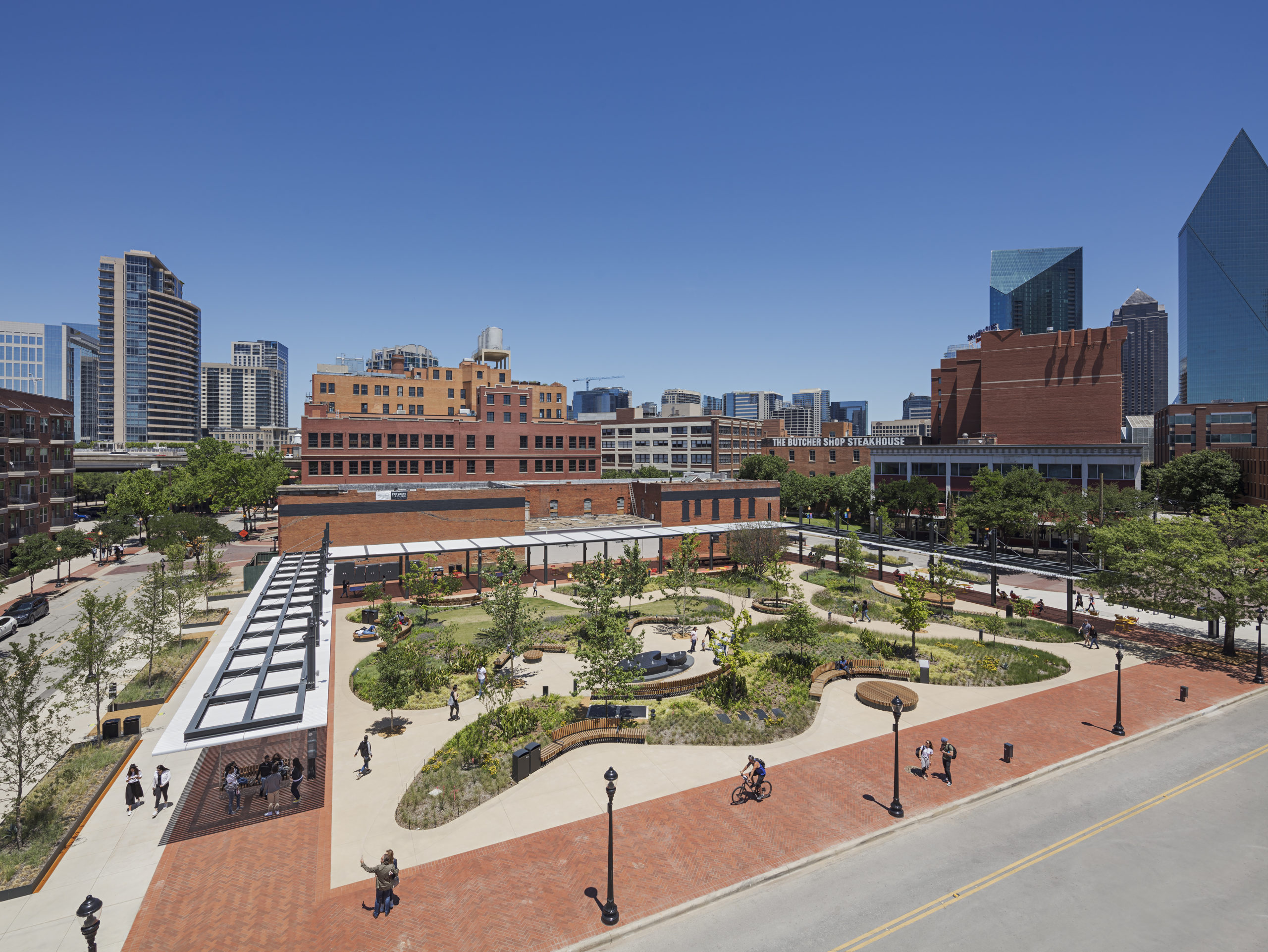
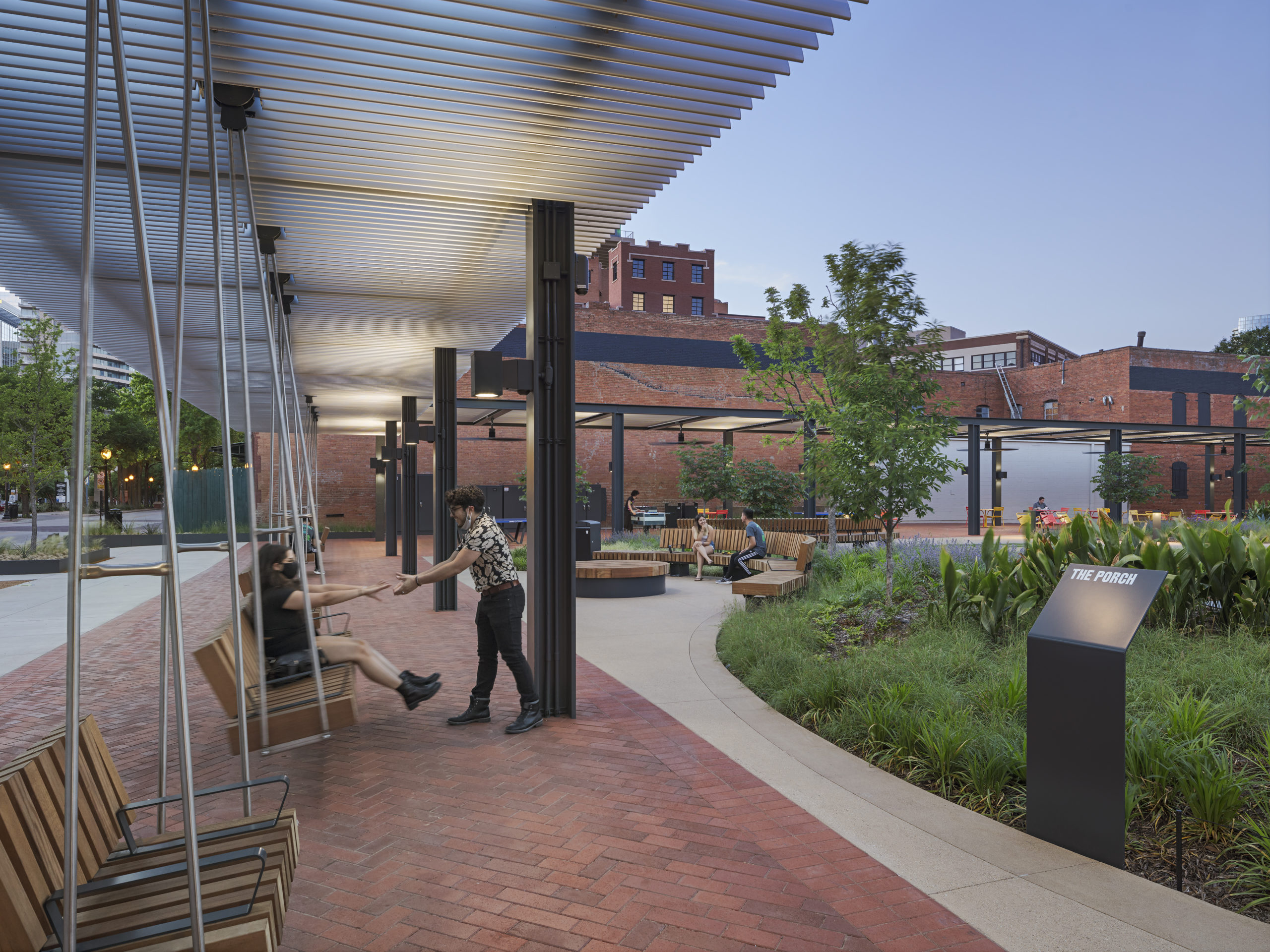
West End Square used to be a parking lot, but it is now a public place providing spaces for work, play and relaxation for the innovative community it serves. The renovation was begun and finished during the pandemic. The space now plays hosts to a large lineup of events including dancing classes, art installations and local vendor markets.
In the middle of the square is a slightly undulating landscape with meandering paths, seats and vegetation. Surrounding the landscape, three rows of trellis act as a transition between the square and the street. They provide sheltered outdoor workspaces and game areas with lighting, fans and power supply for different events.
Little Island
By Heatherwick Studio, New York, NY, United States
Jury Winner, 10th Annual A+Awards, Public Parks & Green Spaces
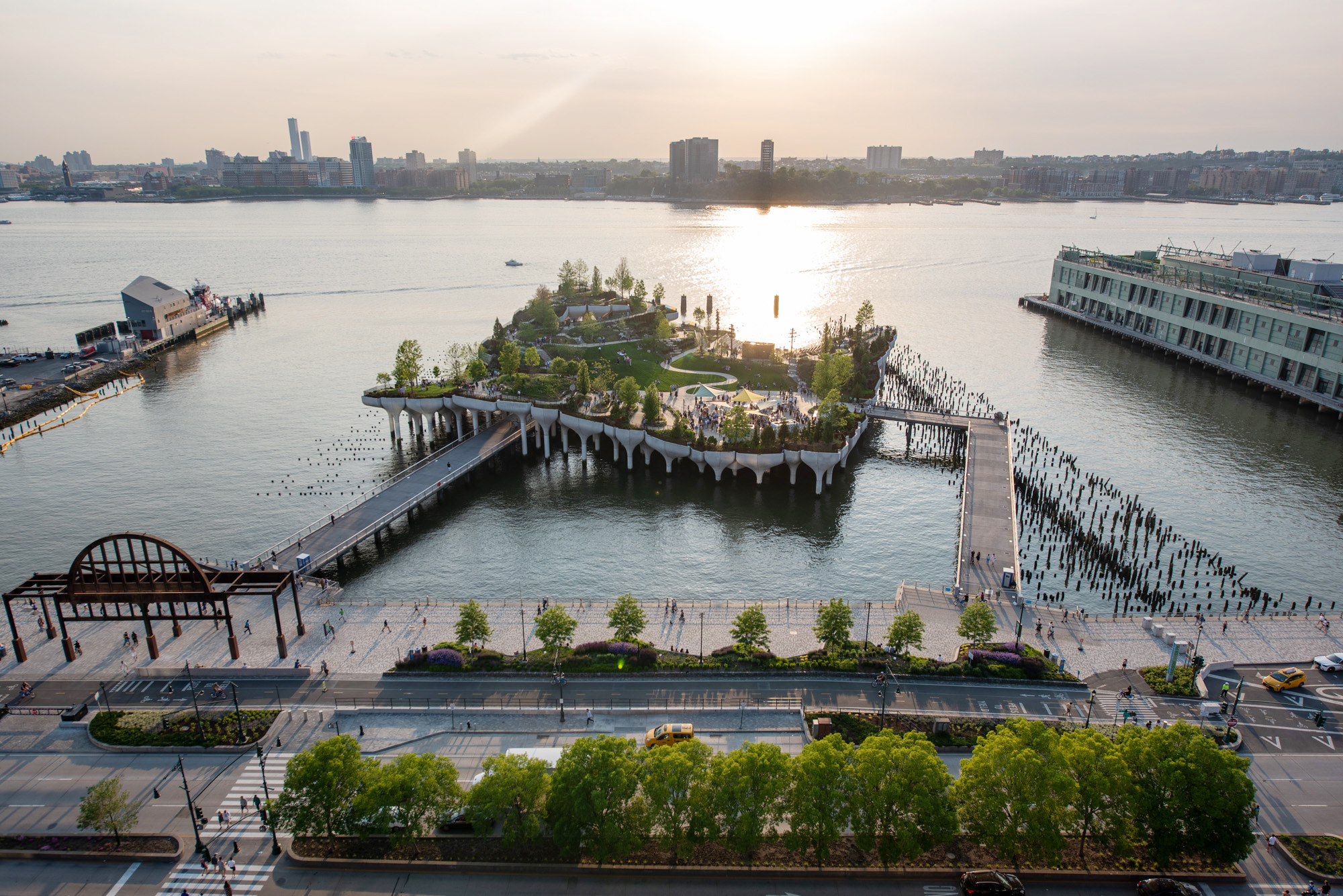
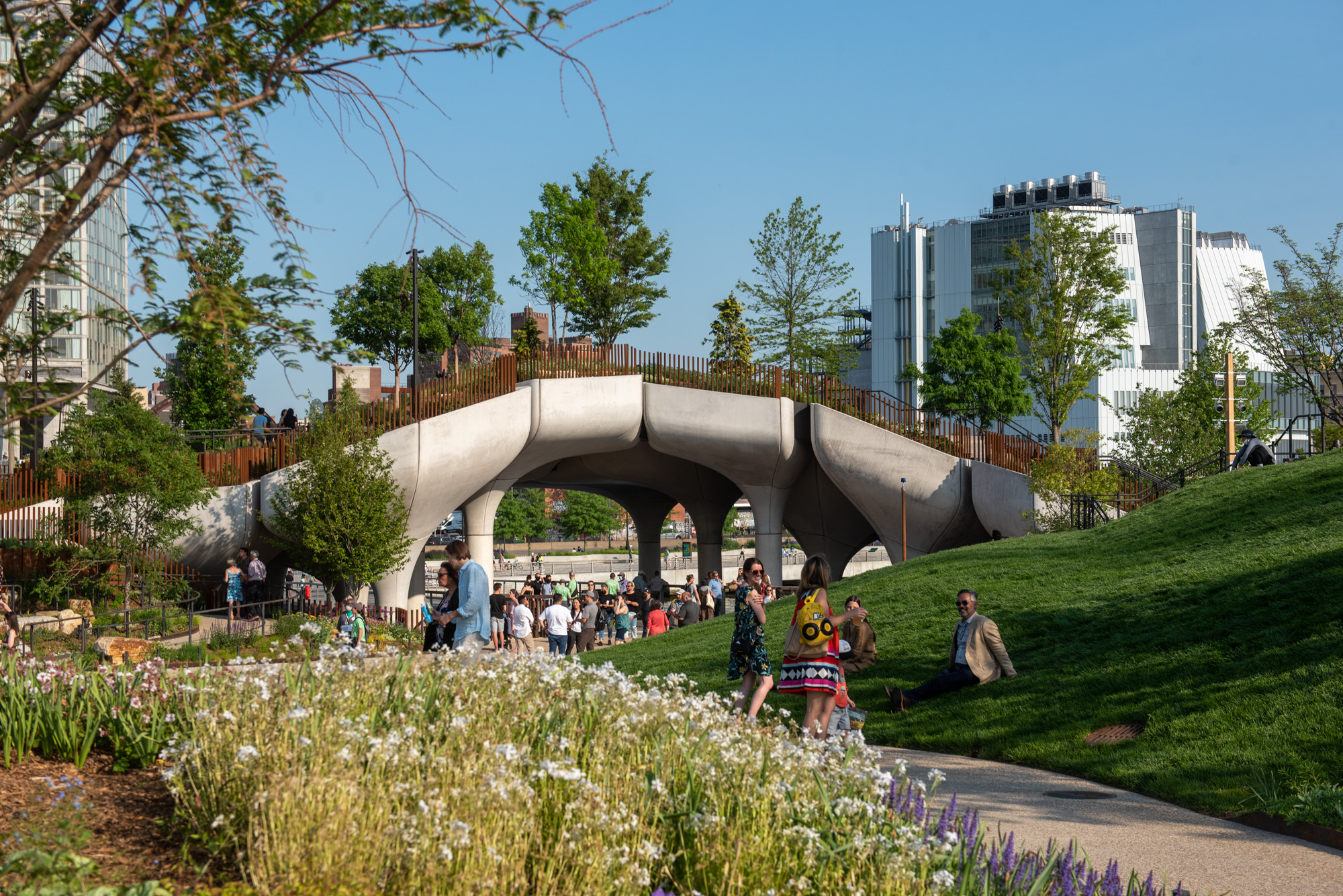
Photos by Timothy Schenck
Considering the crazy demand for land, Manhattan definitely ranks high in terms of land scarcity. Little Island creates an undulating landscape over the Hudson River, within a short walk from Manhattan’s Lower West Side. The project reimagines what a pier could be and starts from an experience-centric aspect. To allow visitors to leave the city behind and enjoy the park, it provides an environment that highly contrasts with Manhattan’s flat, hard-surface streets.
Within the landscape built from local species, there are a 700-seat amphitheater, a 200-seat spoken word stage and a flexible venue for large events. The void between piles of different heights becomes the back-stage so that no building that disrupts the landscape will be needed to support the theater’s functioning.
Riverfront Fort Wayne
By Lamar Johnson Collaborative, Fort Wayne, IN, United States
Jury Winner, 9th Annual A+Awards, Public Parks
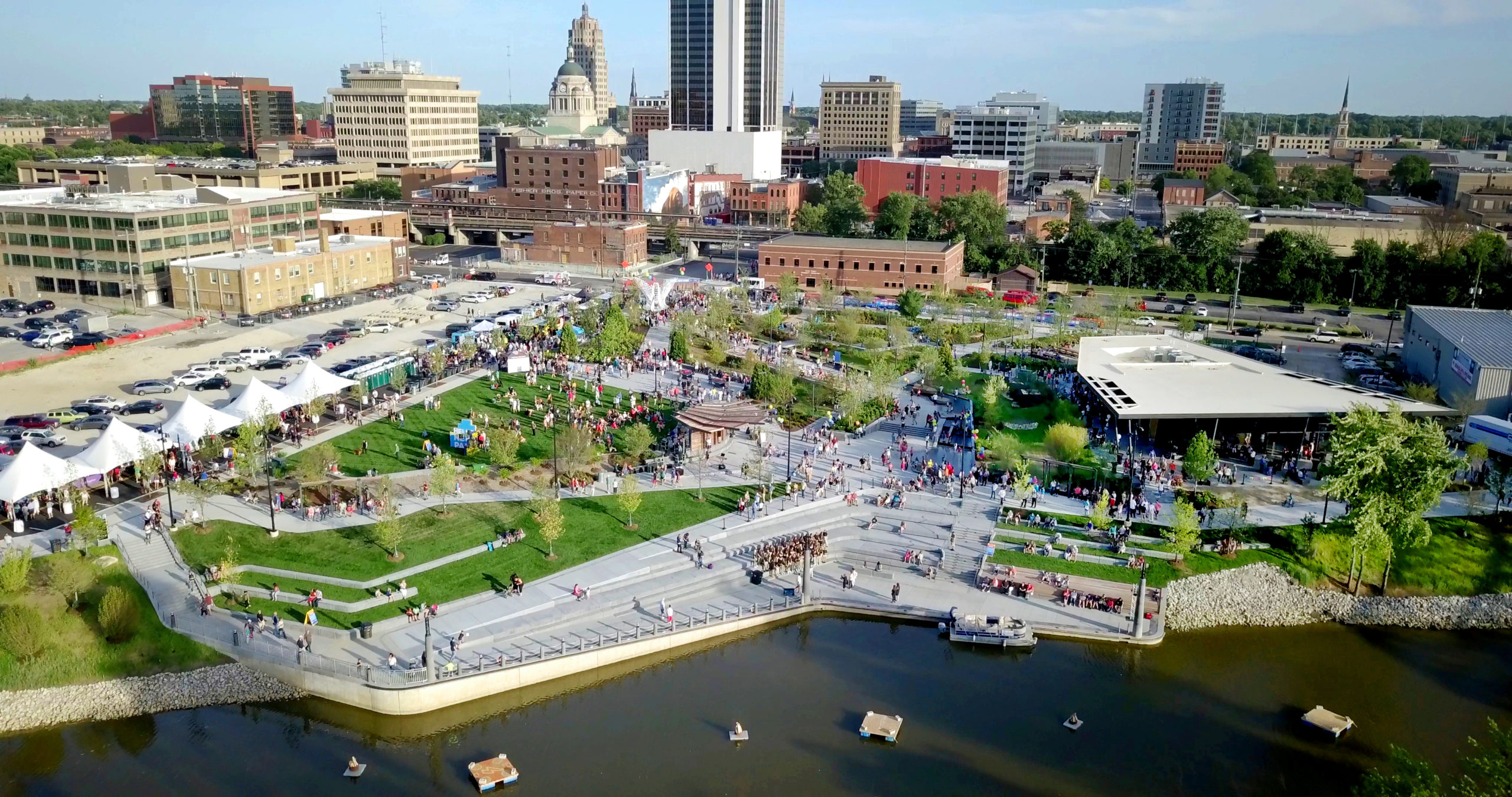
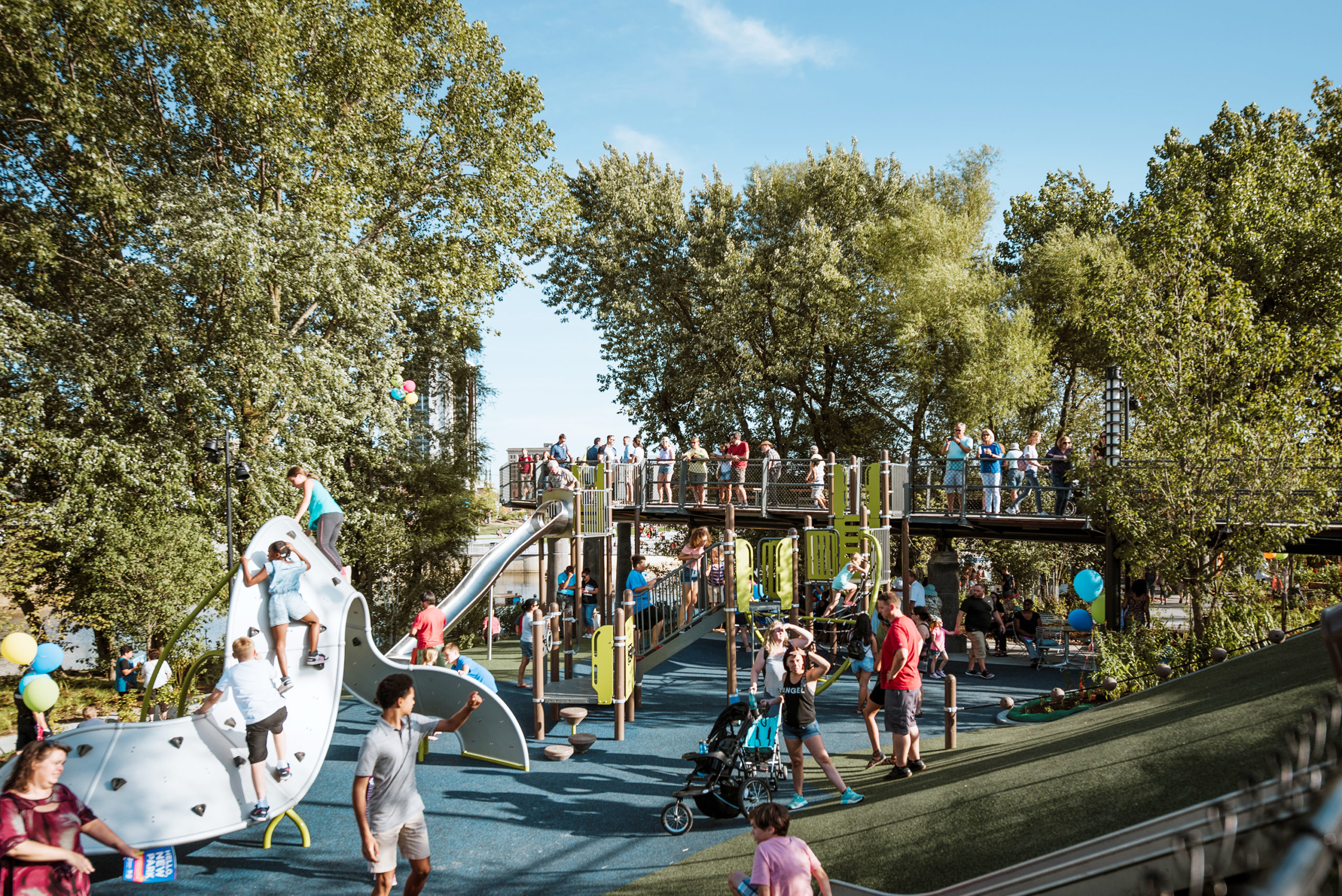 Riverfront Fort Wayne activates the banks of St Marys River and becomes a connection between people and the river. The project takes a section of the river and rebuilds the two waterfront plots with recreational facilities and ecological restoration schemes. Walkways are available on different levels, offering changing views and walking experiences. Seats come in benches, swings and other forms that cope with the landscape. These facilities perform functionally and aesthetically so that together they build a rich landscape. In addition to a variety of greenery, walkways and seating areas, the project also includes outdoor venues, dining areas and water sports fields. It is more like a community complex than a typical public garden.
Riverfront Fort Wayne activates the banks of St Marys River and becomes a connection between people and the river. The project takes a section of the river and rebuilds the two waterfront plots with recreational facilities and ecological restoration schemes. Walkways are available on different levels, offering changing views and walking experiences. Seats come in benches, swings and other forms that cope with the landscape. These facilities perform functionally and aesthetically so that together they build a rich landscape. In addition to a variety of greenery, walkways and seating areas, the project also includes outdoor venues, dining areas and water sports fields. It is more like a community complex than a typical public garden.
Oxygen Park
By AECOM, Education City, Doha, Qatar
Popular Choice, 7th Annual A+Awards, Public Parks
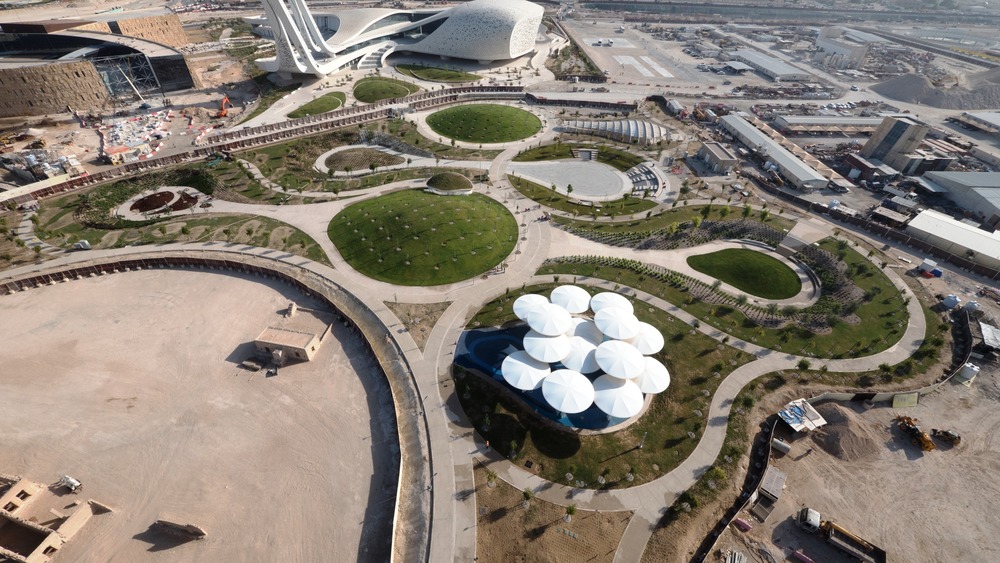
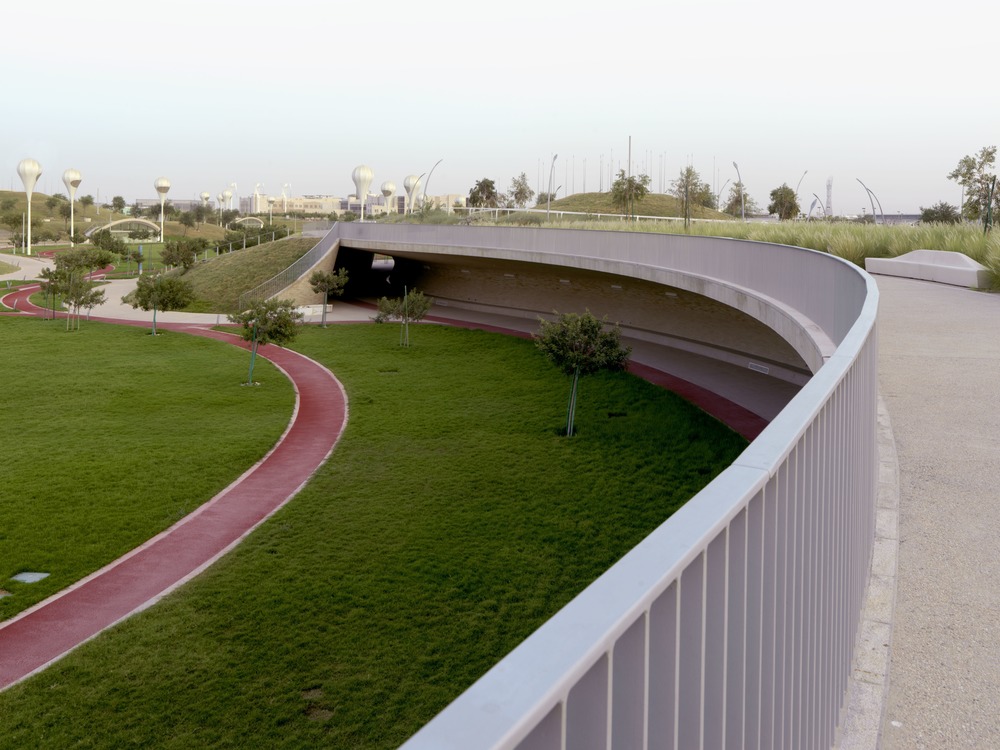 Inspired by wind-eroded rocks, Oxygen Park is designed for health and wellbeing in a desert environment. Focusing on providing spaces for physical exercise, the spacious park features long paths and running tracks that are weaved into the created landscape. The paths vary from those that are high-level and overlook the greenery, to one that is sheltered with waterfalls, creating cave-like tunnels. The path and running tracks are embedded in the topography to create an exciting training ground. All walkways are well-lit at night, providing an attractive setting for exercising during cooler hours of the day.
Inspired by wind-eroded rocks, Oxygen Park is designed for health and wellbeing in a desert environment. Focusing on providing spaces for physical exercise, the spacious park features long paths and running tracks that are weaved into the created landscape. The paths vary from those that are high-level and overlook the greenery, to one that is sheltered with waterfalls, creating cave-like tunnels. The path and running tracks are embedded in the topography to create an exciting training ground. All walkways are well-lit at night, providing an attractive setting for exercising during cooler hours of the day.
Thammasat University Urban Rooftop Farm
By LANDPROCESS, Phahonyothin Road, Tambon Khlong Nung, Thailand
Jury Winner & Popular Choice, 8th Annual A+Awards, Public Parks
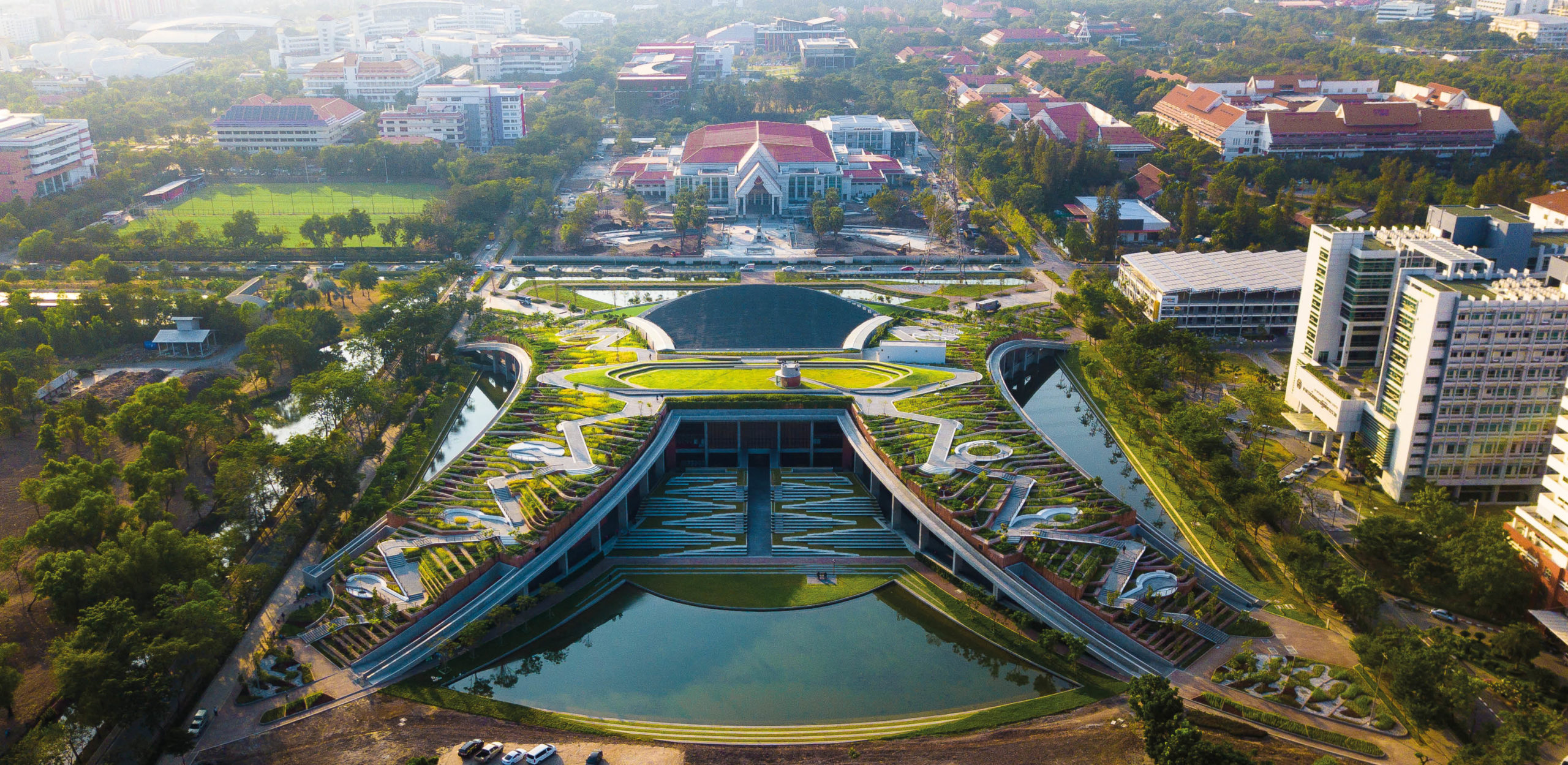
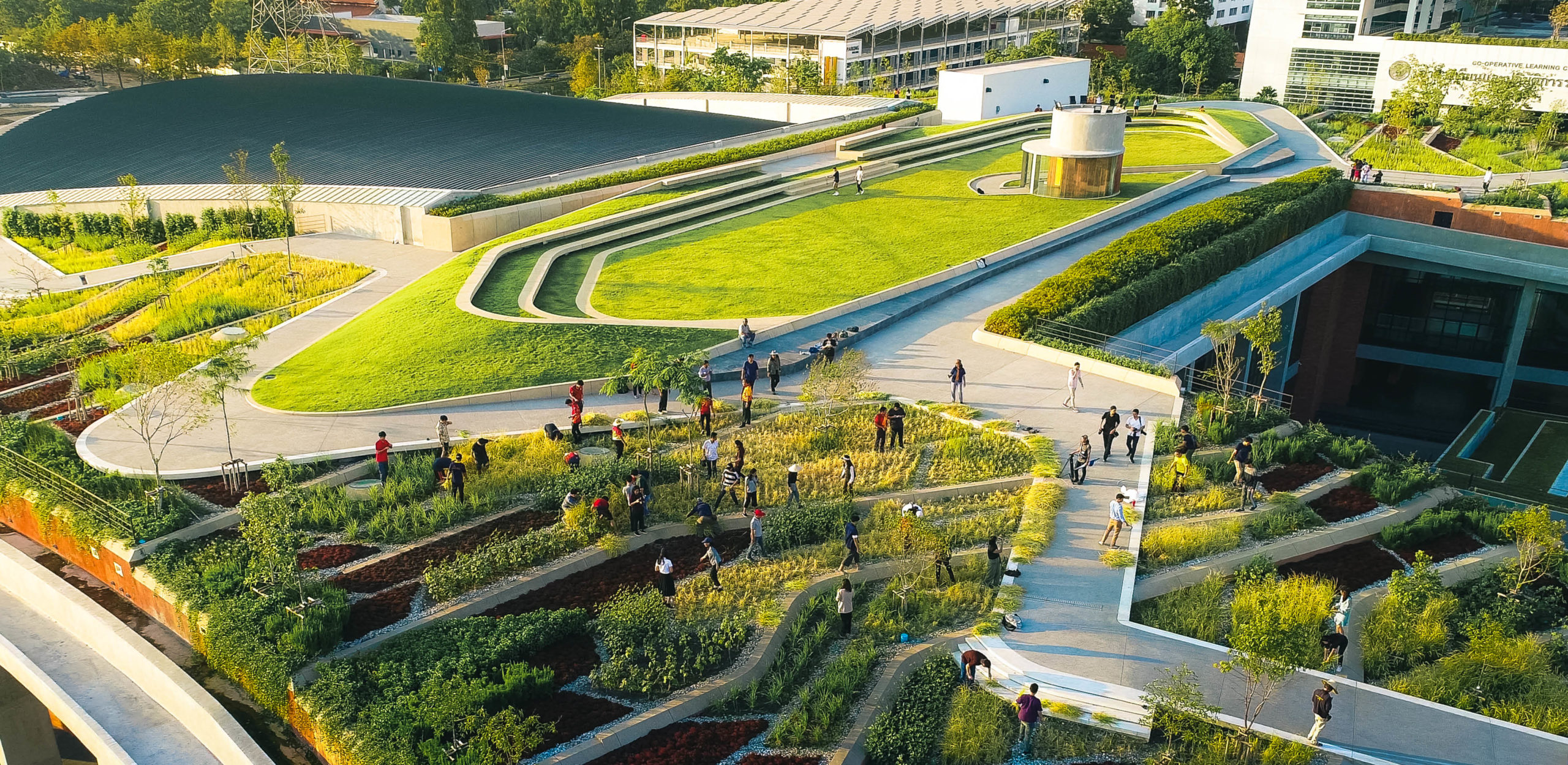 Thammasat University Urban Rooftop Farm aims to tackle global food shortage by utilizing the neglected spaces — rooftops. This rooftop farm integrates landscape architecture with traditional Asian rice terraces. It proposes an experimental scheme that produces food sustainably while can be used as a public green space that is beneficial to people’s health.
Thammasat University Urban Rooftop Farm aims to tackle global food shortage by utilizing the neglected spaces — rooftops. This rooftop farm integrates landscape architecture with traditional Asian rice terraces. It proposes an experimental scheme that produces food sustainably while can be used as a public green space that is beneficial to people’s health.
With modern green roof technology and the descending landscape of rice terraces, the rooftop farm absorbs, filters and slows down runoff twenty times more efficiently than conventional concrete rooftops. Apart from relaxing walkways, Thai agriculture and landscape educational schemes are also embedded into the rooftop farm.
How can architecture be a force for good in our ever-changing world? During Future Fest, we’ll pose this question to some of the world’s best architects. Launching in September, our three-week-long virtual event will be 100% free to attend. Register here!


